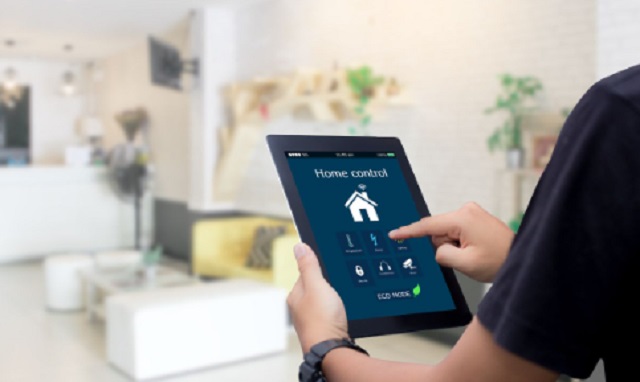Also Interesting
The Future of Fault Detection: AI and IoT Innovations in Garage Door Repair

AI and IoT are making big changes to how we fix garage doors. They help find problems faster and better. With AI, we can watch garage doors all the time. IoT lets us see if something is wrong right away. This makes fixing garage doors easier. It also makes customers happier because their problems get solved quickly.
Sometimes, garage doors stop working out of the blue. People don’t know why. But the Predictive Maintenance Market is helping. This market is getting bigger and bigger. By 2029, it could be worth $47.8 billion! This growth is thanks to new IoT tech and ways to understand data. As this market grows, using AI and IoT for garage door repairs gets better. We can find issues before they become big problems. This lets us fix things ahead of time.
This article talks about how AI and IoT change garage door fixes. These new ways help find and fix problems fast. With AI and IoT, garage door repair get simpler and easier. Homeowners can get their garage door issues solved quickly with these
new ways.
AI Spots Garage Door Faults
Artificial intelligence makes it simpler to find issues with garage doors. The systems work all the time, day and night. They look at information constantly to catch problems early. This prevents bigger issues from happening later. Catching
problems early keeps garage doors working well for longer; it also reduces the chance of sudden breakdowns.
Sophisticated learning models drive these smart systems. Over time, the models study lots of data. They learn to recognize patterns that point to future issues. As they take in more information, they get better at spotting potential problems. This
leads to less downtime for repairs. It also helps garage doors run smoothly. With intelligent technology, homeowners feel secure. They know their garage doors are being watched carefully.
IoT for Real-Time Garage Door Monitoring
Moving beyond smart fault finding, IoT monitors garage doors closely. Cameras and motion sensors make this work. These gadgets send alerts to your phone if something odd happens. You stay informed, home or not.
Smart home tech lets you check your garage door anytime. You can see if it’s open or shut and control it remotely. This adds security by enabling quick action if needed. With IoT monitoring your garage door, you can relax knowing all is secure.
Breakthroughs in Fault Detection Technologies
New advances change how we spot garage door issues. Smart sensors and constant IoT tracking enable smarter repairs.
New Sensors Help Fix Garage Doors
Special sensors use computer programs to find issues with garage doors before they become big problems. With these sensors, your garage door can understand how it is working right now. This smart technology makes fixing problems easier.
The sensors also prepare for future issues by looking at data over time. They learn from patterns and predict when a part might break down. This helps avoid unexpected breakdowns, making maintenance easier and saving money in the long run. These sensors bring a new level of accuracy, changing how we take care of our garage doors.
Watching Devices All the Time
Smart gadgets have changed many businesses, like garage door fixing. These gadgets can track how products work and use energy. When gadgets connect to products, they can see how they work and use energy in real-time. This gives useful data to make things better and fix them.
Smart gadgets can quickly spot when things aren’t working right. They can find problems fast so there’s less downtime. Bigger issues are less likely too. By looking at data and tracking where things are, smart gadgets make it easy to manage info from different gadgets. This makes it a way better to find faults and fix things. Problems get found and fixed quickly. In the end, fixing costs less and things work better.

The Benefits of Using AI and IoT for Garage Door Services
New ways to find problems with garage doors are changing how we fix them. Smart sensors and tracking can now watch garage doors all the time. This helps find issues before they get worse. These systems use data and computer programs to
look for patterns. They can see if a garage door is having problems and needs repairs. Finding problems early means unexpected breakdowns are less likely. It also helps plan when a garage door needs maintenance, so it can stay working
smoothly.
Finding Problems Quickly and Accurately
AI and IoT help find problems with garage doors quickly and accurately. AI systems use data from sensors to find errors or potential issues fast. This means garage doors get fixed sooner, often before they break down. Smart technology makes
finding problems accurate and efficient, instead of guessing.
IoT devices monitor garage doors in real-time, so any issue is noticed right away. This automation improves how well systems work by allowing for predictive maintenance through intelligent diagnosis.
Saving Money on Maintenance
Using AI and IoT tools can help reduce costly repairs for garage doors. These tools can find issues before they get worse. This can cut down on unexpected costs and make garage doors last longer. Instead of fixing issues after they happen, this
approach finds and fixes them early on. This helps garage doors work better for longer.
IoT sensors and data analysis help spot issues early. This allows repairs before bigger problems happen. AI and IoT tools make repairs faster, cheaper, and better. They also makes customers happier. Smart sensors let homeowners go longer
without surprise breakdowns. This saves money on emergency repairs.
Enhanced Safety and Security Features
Advanced sensors with AI can quickly detect issues with garage doors. This ensures the doors operate correctly without glitches or errors that could be unsafe. Smart automation creates an extra layer of security too. It makes unauthorized
entries much harder.
These smart solutions allow for better maintenance before problems arise. They can predict errors before they occur, greatly improving security capabilities. You can control and monitor your garage door remotely through a smartphone or other device.
This convenient remote access also enhances safety. You receive alerts about any potential issues right away, preventing serious problems.
Customer Convenience and Service Efficiency
Smart home tech helps garage doors work better for you. AI learns what you like. Then, it gives you ways to open and close your garage doors from anywhere using your phone or voice. You can get into your garage easier this way. Smart tech also
checks if your garage door needs fixing before it breaks. This saves you time and money. Special sensors see if things are in the door’s way so it won’t hit them.
People feel safer at home when the garage door won’t hurt anyone or anything. In conclusion, using smart sensors and technology for garage doors is helpful. Problems are found faster. Repairs happen sooner. This saves money by avoiding
big issues. It also provides safety. Sensors prevent accidents by stopping the door. As technology keeps improving, garage doors will get even smarter. They will work better and be safer. Homes will be more secure with these new innovations. The future looks promising for keeping garage doors in good shape.
Also Interesting
KYC in Casino Gaming

KYC, which means “Know Your Customer,” has become one of the most important systems in casino gaming today. In the early days of online gambling, players could simply sign up, deposit money, and start playing without giving much personal information. But as online casinos grew, so did the need to confirm who was playing, how they were paying, and where their funds came from.
This change was not sudden. It came through years of regulation, fraud cases, and technological improvement. Even $3 minimum deposit casinos now use KYC to make sure their players are verified and protected.
How KYC Began in Casino Gaming
In the late 1990s the internet was still in its early days, and online casinos came into the picture with hardly any rules regarding identity verification. Security was not a primary concern for gambling platforms, which were mainly occupied with game development and player attraction.
Fraud and underage gambling activities were rampant at that time. Stolen credit cards were being used by some players while others were using fake identities to get through age restrictions.
Regulators soon pointed out that a total lack of control could lead to bigger issues like money laundering and illegal transfers. So, new rules were imposed by the government and one of them was to get the casinos to collect the most basic player information including name, address, and date of birth.
These details, however, did not do much to prove that the players were actually human beings. Nevertheless, it was still very far from what KYC would later turn into.
The Rise of KYC Laws and Regulation
As online gaming spread across Europe and other regions, regulators made stricter laws. They wanted casinos to take responsibility for who was playing on their platforms.
Around the mid-2000s, KYC laws became mandatory for any casino that held a license. This meant players had to submit documents like passports or utility bills to prove their identity and location.
It was not always smooth. Many players disliked sending personal documents online, especially when the internet still had many privacy risks. Casinos also found it challenging to process thousands of verification requests.
But as technology improved, so did trust. Encryption became stronger, and online platforms became safer. This marked the true beginning of proper KYC systems in casino gaming.
Why KYC Became So Important
The goal of KYC is simple. It makes sure gambling stays safe, legal, and fair. With KYC, casinos can stop criminals from using their platforms to clean illegal money.
It also protects players by preventing identity theft and underage gaming. Over time, players began to understand that KYC was not just about restrictions. It was about protection.
A verified account means that a casino can return funds to the rightful owner if there is any problem. It also helps regulators ensure that every transaction is transparent and traceable.
In short, KYC built the bridge of trust between casinos and their players.
Technology Transformed the KYC Process
KYC was initially a hand-operated process. Players needed to upload their document’s scanned copies. The casino personnel then manually checked them. This process could last for days and even weeks sometimes.
However, technology has completely altered that scenario. Currently, most of the casinos make use of KYC automatic verification systems powered by AI.
These systems can read and verify an ID within seconds. The system checks its authenticity and even compares the image to a selfie taken by the player.
There are also some casinos that go for biometric verification as well. Players use their fingerprints or facial recognition to verify their identity.
Moreover, blockchain technology has started to play a role in KYC. The use of blockchain ensures safe storage of identity data. Players can provide it to the casinos without having to resend the same information over and over again.
This not only saves time but also keeps user data secure.
Challenges That Still Exist
Even though KYC has come a long way, it is not perfect. Some players still struggle with the verification process, especially in countries where official identification is hard to get.
Others worry about data security and how casinos store their personal information. Casinos face the challenge of balancing speed and safety.
They need to verify players quickly without making the process so strict that it drives them away. The rise of global players also means casinos must follow different KYC laws in different countries. This can be complex to manage.
The Future of KYC in Casino Gaming
The next stage of KYC looks even more advanced. Artificial intelligence will continue to play a huge role. It will help casinos detect fake IDs and spot suspicious activity automatically.
We may also see more global identity databases. They will make cross-border verification easier and safer.
In the future, players could control their own KYC data through secure digital wallets. They can choose which casino to share their identity with. This will keep privacy fully in their hands.
With this kind of progress, both players and casinos win.
How KYC Strengthens the Trust Between Players and Casino
KYC has undergone a radical transformation from being a mere requirement to being the mainstay of trust in online gambling. It is the one that assures clean money, fairness in games, and safety for players. Online gambling would otherwise be a scene of chaos, fraud, and continuous disputes.
KYC compliance and casinos having better verification systems are proving to be very active in promoting and maintaining the integrity and transparency of the industry. KYC has transitioned from being merely a concept to being a pillar, and it continues to regulate the gaming world.
The casino gaming universe is in a state of flux and the pace is quicker than ever. KYC is among the main reasons for this. It is the backbone of a safe, fair, and responsible gambling practice. It not only protects players but also the gaming platform, thus providing a trust-building environment for the online gaming industry to expand.
Also Interesting
How Digital Platforms Are Changing Culture, Creativity, and Everyday Life

Being connected has become a way of life. From the moment we reach for our phones in the morning to evenings spent streaming our favourite shows or playlists, digital platforms shape how we communicate, learn, and relax. What began as simple tools for entertainment have evolved into dynamic ecosystems that influence culture, creativity, and social interaction. Looking ahead, this evolution will only deepen, the line between digital and physical life will continue to blur, weaving online experiences into nearly every aspect of daily living. This transformation is not just technological but cultural, reflecting how people choose to connect, learn, and share meaning in a constantly moving world. The digital lifestyle has become part of who we are, shaping how we live, think, and experience the world around us.
A new kind of lifestyle
The idea of a digital lifestyle goes beyond technology itself. It represents the culture that surrounds how people use it. Across Canada, the way people experience leisure, work, and social connection has changed dramatically in the past decade. Streaming platforms, gaming communities, and social networks are no longer separate spaces but extensions of everyday reality.
It is no longer only about watching or consuming content. People now act as curators and participants, shaping what they see and share. Through short-form videos, online communities, and live streams, users are not only consuming culture but helping to create it. This participatory model has produced a more inclusive and expressive entertainment landscape that reflects shared interests and creativity.
The cultural shift behind entertainment
Digital media has opened the door to creativity for everyone. Anyone with a smartphone and an idea can share their perspective with a global audience. This accessibility has changed what it means to be a creator or a commentator. Online platforms have become modern stages where cultural trends emerge, evolve, and spread.
Gaming communities now attract audiences comparable to traditional sports, while music and visual storytelling have merged through digital platforms. The result is a culture that values immediacy, diversity, and collaboration. A recent report on technological innovation in digital entertainment highlights how streaming and social media are merging to create new hybrid ecosystems. This evolution encourages direct engagement between creators and audiences and pushes industries to rethink how content is produced and shared.
Life in Canada’s expanding digital landscape
In Canada, the digital shift is clear in how people interact with entertainment and information. Remote work, online learning, and digital leisure have become part of
everyday life. Platforms that once served niche audiences now represent mainstream culture, shaping how people spend their free time and connect with others.
Within this wider transformation, platforms such as speedz.com illustrate how digital entertainment continues to evolve. This online entertainment operator applies a modern “Pay’n Play” model that focuses on accessibility and speed. This approach reflects a broader cultural shift toward seamless, on-demand digital experiences, where interaction and convenience shape how users engage with content. While its foundation lies in entertainment, the platform embodies how technology-driven design now defines user expectations across all digital spaces.
As global discussions explore the merging of online and offline experiences, Canada’s digital lifestyle continues to evolve through entertainment, innovation, and community connection. People are becoming more mindful of how they use technology, balancing their online engagement with offline experiences to maintain a sense of connection and perspective.
The benefits and boundaries of the digital lifestyle
Living digitally offers new ways to connect, collaborate, and express ideas. People can work remotely, explore new interests, or join communities that share their passions. Access to diverse content has become easier and faster, and cultural exchange is now a daily experience.
However, this lifestyle also requires balance. Many Canadians are choosing to set limits on screen time or focus on quality interactions rather than quantity. As technology continues to evolve, awareness and self-regulation will remain important skills for maintaining a fulfilling digital life.
-

 Alberta2 days ago
Alberta2 days agoClick here to help choose Alberta’s new licence plate design
-

 National2 days ago
National2 days agoDemocracy Watch Renews Push for Independent Prosecutor in SNC-Lavalin Case
-

 Business2 days ago
Business2 days agoOver two thirds of Canadians say Ottawa should reduce size of federal bureaucracy
-

 Alberta1 day ago
Alberta1 day agoBusting five myths about the Alberta oil sands
-

 Frontier Centre for Public Policy1 day ago
Frontier Centre for Public Policy1 day agoOttawa Should Think Twice Before Taxing Churches
-

 Energy24 hours ago
Energy24 hours agoMinus Forty and the Myth of Easy Energy
-

 Health23 hours ago
Health23 hours agoNew report warns WHO health rules erode Canada’s democracy and Charter rights
-

 City of Red Deer1 day ago
City of Red Deer1 day agoPlan Ahead: Voting May Take a Little Longer This Election Day




